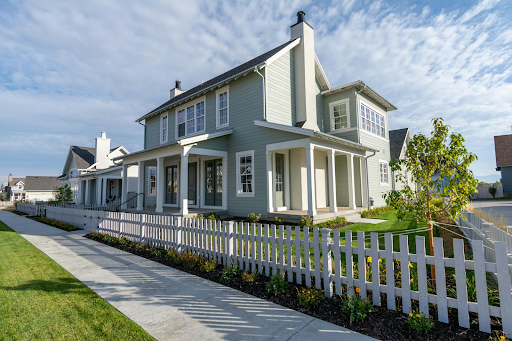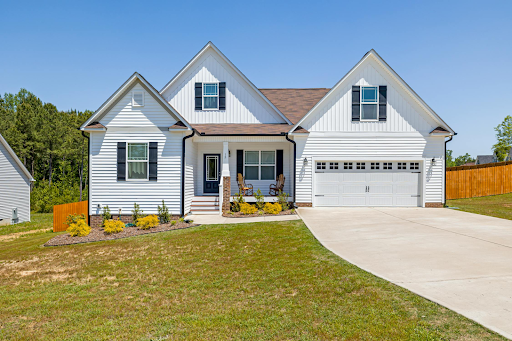Real Estate Market Trends in Memphis and Central Arkansas
The real estate markets in Memphis, Tennessee, and Central Arkansas have been drawing significant attention due to their unique characteristics and growth potential. Situated along the Mississippi River, Memphis is known for its rich cultural history and vibrant music scene. Meanwhile, Central Arkansas, with Little Rock at its heart, offers a blend of urban and rural lifestyles, making it an attractive destination for diverse demographics.
Both regions play a crucial role in the real estate landscape of the southern United States. Memphis, being the largest city in Tennessee, serves as a commercial and cultural hub. Central Arkansas, on the other hand, provides a balanced mix of city and countryside living, appealing to those seeking a quieter environment without sacrificing urban amenities. Historically, these areas have seen fluctuating real estate trends influenced by economic shifts, migration patterns, and changes in housing inventory.
Economic Developments in Memphis and Their Influence on Home Prices
Memphis has experienced notable economic growth in recent years, driven by its major industries such as logistics, healthcare, and manufacturing. The presence of large corporations like FedEx, which is headquartered in the city, has contributed to job creation and economic stability. As the economy thrives, the real estate market reflects these changes, with home prices and sales showing upward trends.
Neighborhoods like Midtown and Downtown Memphis have witnessed revitalization efforts, attracting new businesses and residents. This growth often leads to increased demand for housing, pushing home prices upward. Conversely, areas that haven't seen much economic development might experience slower growth or even decline. For more detailed insights into Memphis's economic growth, you can refer to this
economic report.
Migration Patterns and Their Effects on Real Estate in Central Arkansas
Central Arkansas has been experiencing interesting migration trends, with an influx of people moving from larger cities seeking more affordable living and a better quality of life. This movement has impacted housing demand significantly, creating pressure on the available housing inventory. As more people relocate to the area, the demand for housing increases, often leading to a rise in property values.
Demographic shifts are also noticeable, with younger families and professionals contributing to the area's dynamic real estate market. These changes present opportunities for sellers as the demand for housing continues to rise. For further reading on migration trends affecting Central Arkansas, see this
study on Arkansas migration.
Housing Inventory and Its Role in Shaping the Market
Housing inventory, which refers to the number of homes available for sale, plays a pivotal role in shaping real estate markets. In both Memphis and Central Arkansas, inventory levels have fluctuated due to various factors, including economic conditions and migration trends.
In Memphis, the current housing inventory remains tight, leading to competitive buyer behavior and increased home prices. Similarly, Central Arkansas faces a limited housing supply, especially in high-demand areas. This scarcity influences pricing strategies for sellers, who may benefit from the competitive market environment.
Supply and Demand: Key Factors in Central Arkansas Real Estate
The balance of supply and demand is a fundamental aspect of the real estate market in Central Arkansas. High demand and limited supply in certain areas, such as Little Rock and Conway, create a seller's market, where sellers have the advantage due to numerous buyers competing for a limited number of properties.
Conversely, areas with abundant supply and lower demand may experience slower price growth or even stagnation. Understanding these dynamics is crucial for both buyers and sellers as they navigate the market.
Cultural and Geographical Influences on Real Estate Trends
Cultural and geographical factors significantly influence real estate trends in Memphis and Central Arkansas. Memphis's rich musical heritage and vibrant cultural scene attract residents and tourists alike, enhancing its real estate appeal. Neighborhoods like Cooper-Young and Beale Street offer cultural attractions that draw buyers looking for a lively environment.
In Central Arkansas, the natural beauty of the Ozark Mountains and the Arkansas River provide unique geographical features that attract nature enthusiasts and those seeking a picturesque setting. Areas like Hot Springs and the Ouachita National Forest are popular among buyers seeking proximity to outdoor activities.
Future Projections for the Memphis and Central Arkansas Real Estate Markets
Looking ahead, the real estate markets in Memphis and Central Arkansas are poised for continued growth, driven by economic development and migration trends. However, potential challenges such as housing affordability and inventory constraints may impact market dynamics.
Local real estate analysts suggest that while opportunities abound, sellers should remain vigilant about market conditions and be prepared to adapt to changes. As these markets evolve, staying informed about economic and demographic shifts will be crucial for making strategic real estate decisions.
In conclusion, the real estate markets in Memphis and Central Arkansas offer diverse opportunities for buyers and sellers alike. By understanding the economic, cultural, and geographical factors at play, stakeholders can better navigate these dynamic environments and capitalize on emerging trends.










